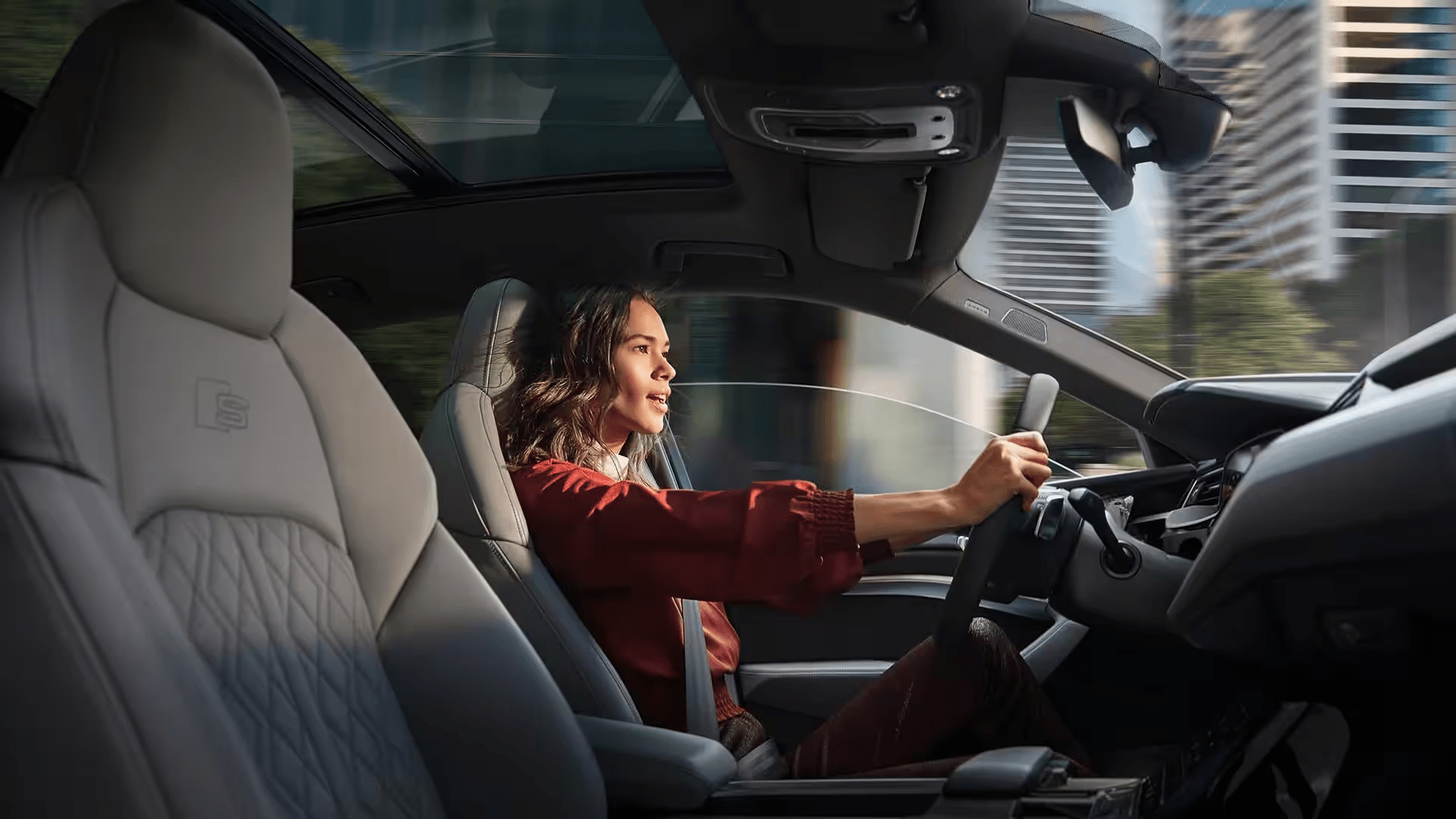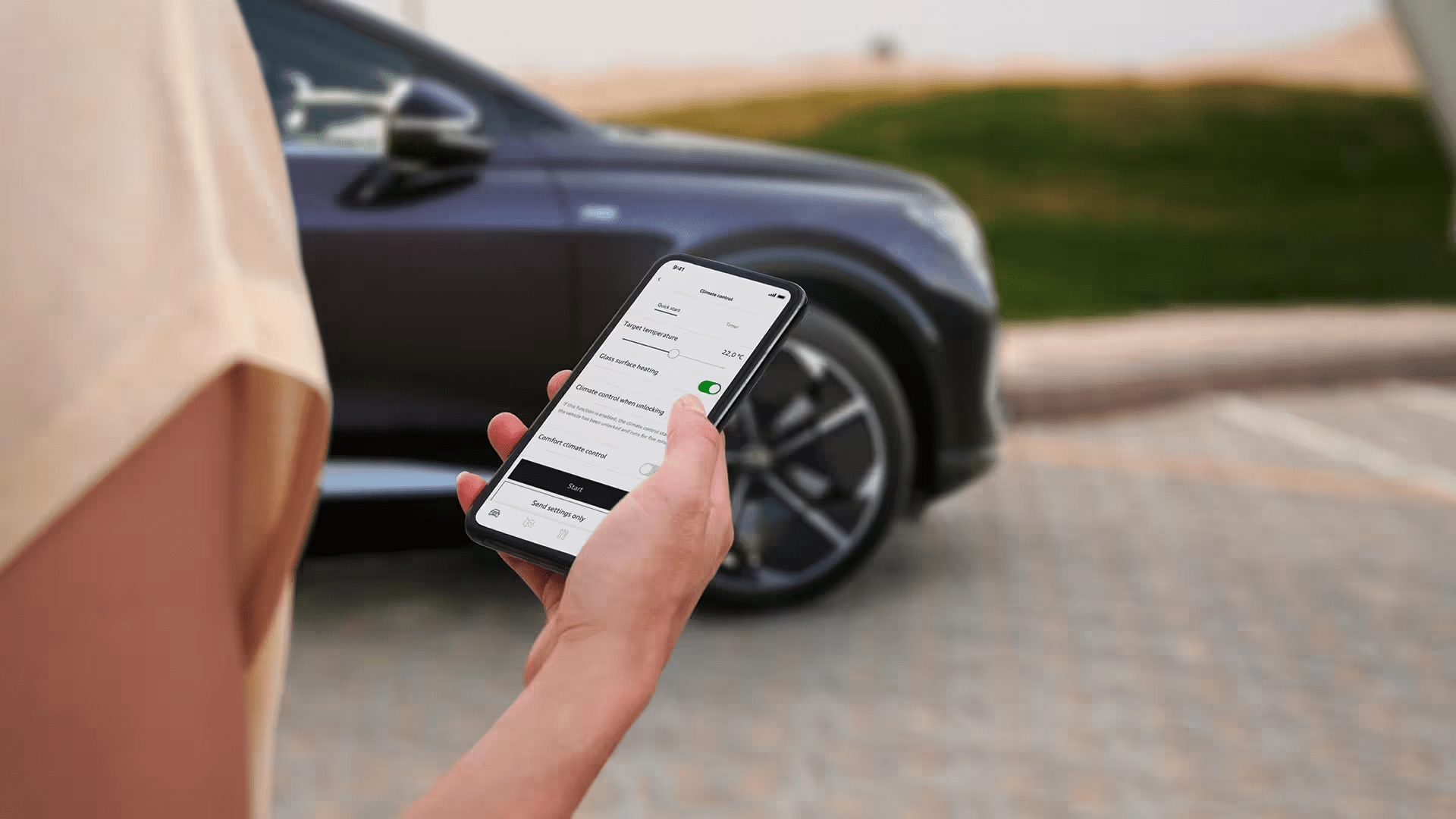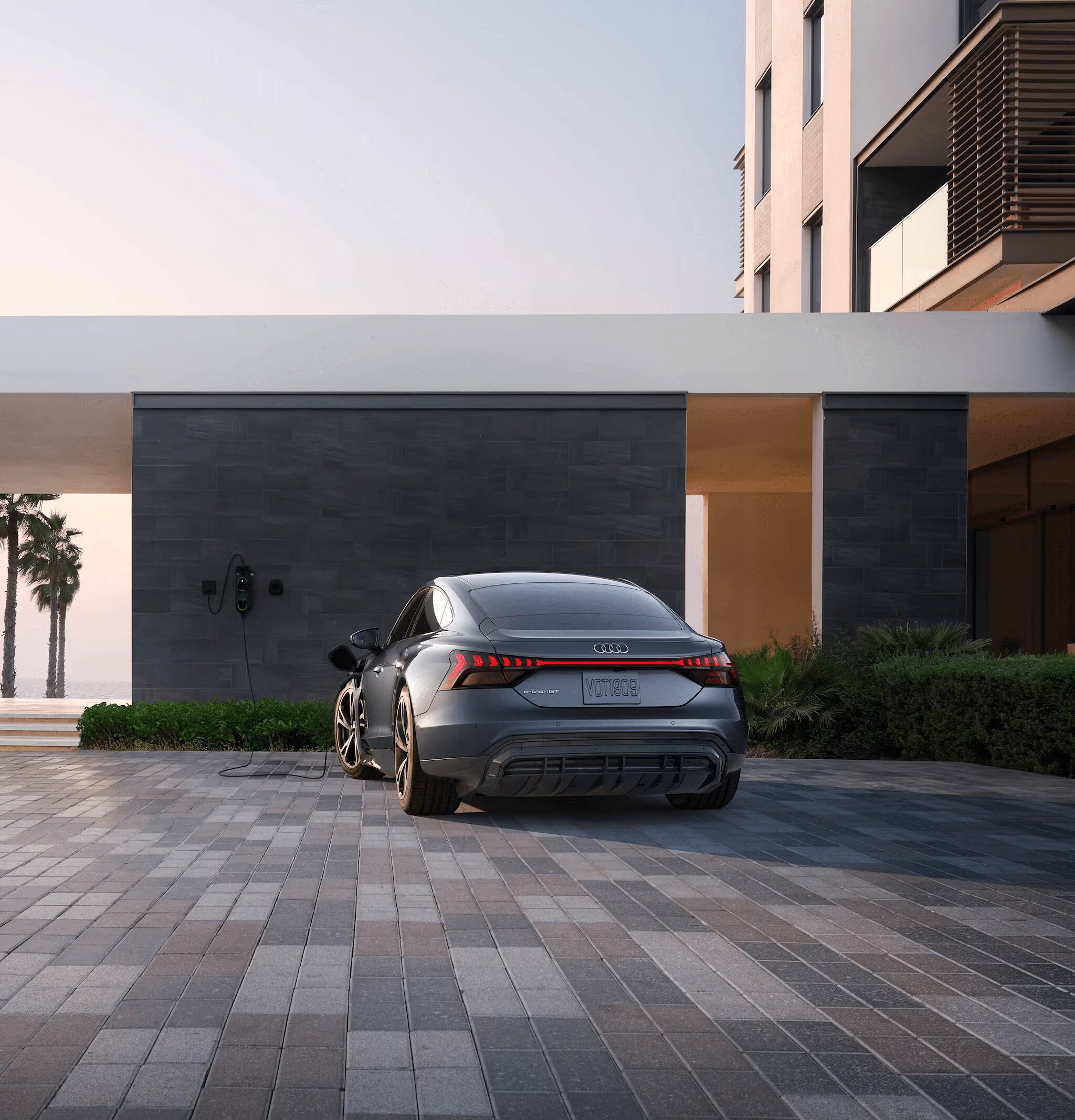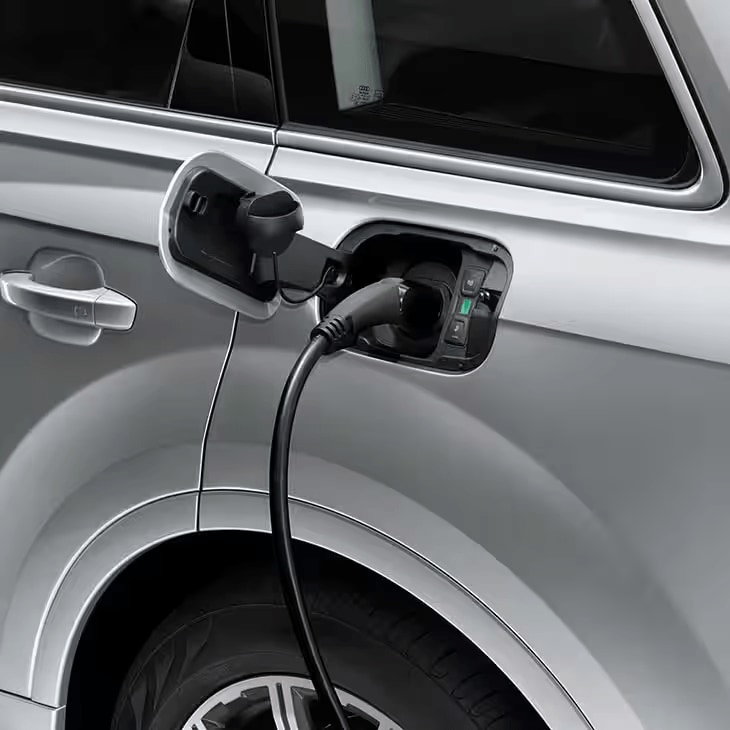The future of electric. The Audi e-tron.
Charging your Audi e-tron has never been easier.
Charging 101.

Living electric.
Making the switch to an electric vehicle from a gas-powered vehicles requires a shift in the way you think about driving-most importantly, understanding how electric power works.
Next-level power.
Audi e-tron and PHEV vehicles can accept various charging levels depending on where you charge, battery temperature and how much charge is required.


Seamless connection with the myAudi app
With the myAudi app, control your e-tron conveniently from your smartphone. Check the status of your vehicle and remaining charge time, find charging stations, and more.
 Charging terms
Charging terms
What is a kW?
Charging power is measured using kilowatts (kW), the rate at which energy is being generated (charging) or consumed (driving). Generally, the higher the number, the faster the charge. The onboard charger on your Audi e-tron will dictate how many kilowatts can be used for charging.
What is a kWh?
Battery capacity is measured in kWh, or kilowatt hours, versus litres (as it is in a conventional gas tank). A kWh is essentially the amount of energy available or total energy capacity.
How do they work?
Imagine that power (kW) is like your speedometer, while energy (kWh) is like your odometer. The speedometer tells you how fast you're going (how much power you are using), while the odometer tells you how far you've gone (how much energy you've used total).
 Charging at home.
Charging at home.

Wake up to a freshly charged e-tron every day.
In the time it takes to get a good night's sleep, your e-tron will be charged and ready to go. Simply keep it plugged in as often as possible to help ensure your battery operates at maximum efficiency.
Charge on the road.
Where, when, and how do you charge? Canada has over 7,000 public charging stations that are compatible with your Audi e-tron.
Public charging.
There are many public charging stations that make up a network, and they typically belong to the same operator to be used with a single account. Some networks, however, have interoperability agreements, which means an account on one network may also be used to charge (and pay) at another network.


Lightning-fast charging.
Faster than your average trip to the grocery store, your battery can charge 0%-80% in as little as 30 minutes when connected at a public charging station.* Most public charging stations offer DC fast charging.
*Estimated charging times are provided as a reference only. Actual charging times will vary based on battery state of charge, driving behaviour, battery condition, current, resistance, and ambient temperature, available voltage and charging frequency.
7,000 stations across Canada. Find one near you.
Finding a public charging station near you is easy. Simply access the PLugShare map to locate all of the available EV public charging stations near you.


Paying at public stations.
In most cases, payment is required to charge at a public site. Payment methods vary, including: credit card, network RFID charge card, mobile app, or phone. Not every site offers every payment method, so contact the network operator to find out which payment methods are accepted. Charging fees differ between sites.

Save with Electrify Canada
Your Audi e-tron includes complimentary, 4-years access to the Electrify Canada charging network (or 1,400 kWh). Electrify Canada is the nation's leading publlic charging network of cross-country stations that allow you to recharge on long trips in metro areas.*
*Includes 4 years or 1,400 kWh of DC fast charging sessions (with 1-hour intervals between charges) on the Electrify Canada HPC Charging Network. Not available for commercial use vehicles (such as ride shares) and is not transferable. Requires Electrify Canada account, app, valid credit card and acceptance of Terms of Use. After vehicle reaches full charge, and 10-min grace period, idle fees will apply.
Proven battery technology.

Optimum temperature, optimized battery.
While temperature has an effect on range, Audi EVs are engineered to prevent this, including a heat pump that helps warm the battery; a trip timer to help your vehicle warm or cool down the battery before trips; and thermal management of each battery cell to help maintain an optimal temperature.
 Charging terms
Charging terms




